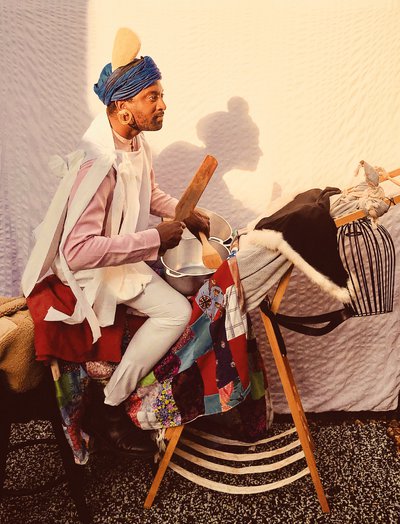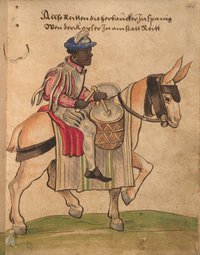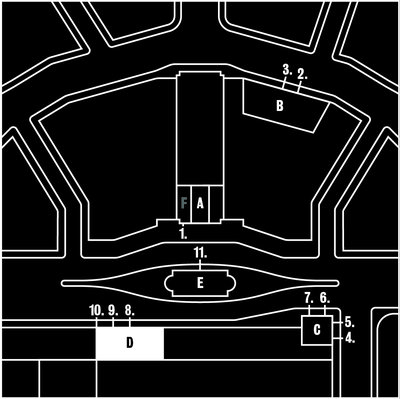08 An African Drummer Reworked using a cou cou stick (used for stirring stew), Granny’s quilt and a ‘clothes horse’


The original image of 'An African Drummer' was recorded by the Nuremberg merchant Christoph Weiditz in 1529 while he travelled through Spain.
Weiditz depicts 'An African Drummer', and the significance of his image rests partly in the occupation to which it testifies. There was a long tradition of African musicians playing at European courts and in processions such as this - Katherine of Aragon, Charles V’s aunt, famously brought Black trumpeters to England in her royal retinue.

Christoph Weiditz, 'An African Drummer', 1529. Germanisches National Museum.
Hear the curator, Hannah Murphy, talk about this painting:
Renaissance Skin · An African Drummer
Strand Campus, Strand, London WC2R 2LS
Law Building, Somerset House, Strand